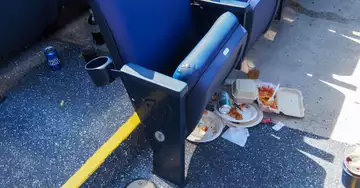Luna collapsed, terraUSD collapsed, and this is going to be a big deal now. I would even go so far as to say that the collapse of UST, as dramatic as it was, will have a legacy similar to that of Libra.
PSA: I'll be in Davos next week covering the annual meeting of the World Economic Forum, so the next issue will be a summary. Will you be in town? Stop by and say hello.
You're reading State of Crypto, a CoinDesk newsletter that focuses on the intersection of cryptocurrency and government. Click here to sign up for future issues.
Terra firmaThe NarrativeRegulators andlawmakers view the collapse of terraUSD (UST) as a question of whether esoteric products like algorithmic stablecoins are safe for crypto investors and whether there are broader financial stability concerns with them
. Why itmattersYears later
, the launch ofthe Libra stablecoin project led to several regulatory approaches and the certainty that governments would sooner or later establish rules for the operation of stablecoins. However, all of these efforts focused on asset-backed stablecoins, not algorithmic stablecoins. The novel structures here could lead to new approaches from regulators. The main difference? Libra was never launched, and there were no asset-backed stablecoin collapses like there were with UST. This difference could lead regulators to give this issue a higher priority.
InJune2019, social media giant Facebook unveiled its long-awaited cryptocurrency project, Libra. Despite the company's assurances that it did not intend to take over global payments or create a non-US dollar-based financial system, regulators cracked down on the project.
They were also largely successful: Libra later renamed itself Diem, scaled back its vision to a fraction of what was originally intended, and eventually did sell its assets and cease operations.
Even though the project never took off, the regulatory impact was enormous. Regulators around the world suddenly saw stablecoins as a major problem that they needed to pay attention to.
The collapse of terraUSD (UST) is the Libra moment for algorithmic stablecoins. Regulators are suddenly paying close attention to algo-stables in general and UST and Luna in particular.
U.S. Treasury Secretary Janet Yellen independently brought up Terra twice last week at various congressional hearings on the Financial Stability Oversight Council (FSOC).
"I think you just illustrated what we saw last week with Terra and Tether to illustrate the risks associated with stablecoins, that runs can occur. And we've seen that in the past with private money, and we've invented a good regulatory framework, I think to deal with that, [we] will try to resolve the custody framework," Yellen said.
She also later clarified that she is not claiming UST is exactly like Tether: "It depends on stablecoin support. Terra is algorithmic and has no real support as such.
It doesn't look like the FSOC, a group of regulators tasked with maintaining U.S. economic stability, is looking into this matter, suggesting they don't consider it very significant on a macro level.
Consumer Financial Protection Bureau (CFPB) Director Rohit Chopra told Bloomberg this week that the collapse of Terra shows people that a stablecoin is not "as good as a dollar."
"Stablecoins are something that all regulators are looking at. Most stablecoins are currently used for speculative trading in and out of cryptocurrencies. Many wonder if they will one day be used for consumer payments, but many think they are not ready," he said.
Potential regulations will likely focus on how stablecoins - and other cryptocurrencies - are used.
This is one of the first times Chopra has spoken about cryptocurrencies since he took on the role of CFPB director last year.
Lawmakers in the U.S. have also questioned regulators about UST and Luna - the topic even came up during confirmation hearings for new regulators.
Meanwhile, there are rumors that the South Korean parliament may seek to subpoena Terra creator Do Kwon for a hearing while law enforcement investigates the collapse as a possible Ponzi or other criminal enterprise.
The question remains, what will regulators actually do? So far, there is no clear answer. Everyone seems to agree that algorithmic stablecoins are their own thing, distinct from reserve-based stablecoins. Fewer people, however, seem to have an opinion on how to translate this into clear regulation or guardrails.
Bidens RegelWirmachencontinues with the status quo.
Elsewhere:- How not to run a cryptocurrency exchange: Japan's Liquid Exchange appears to have been a poorly run, chaotic enterprise. This in-depth report is well worth your time. To quote from the report, "Sources say executives downplayed some information security breaches, failed to disclose others, didn't adequately address low-level insider theft and prematurely closed investigations into the $90 million hack last year."
- (Protos) Former Securities and Exchange Commission (SEC) Director William Hinman received "millions of dollars in retirement benefits" from his former law firm Simpson Thacher & Bartlett, which is also a member of the Enterprise Ethereum Alliance, Protos reports.
- (The Block) The president of El Salvador, Nayib Bukele, tweeted that about 40 central bankers would be speaking about Bitcoin at a conference in his country. It seems the central bankers were actually in town for financial conferences, one of which didn't mention bitcoin at all.
- (Politico) Here's a pretty explanatory I'm-10 explanation of what happened to Terra last week.
If you have thoughts or questions about what I should discuss next week, or if you want to give me any other feedback, feel free to email me at [email protected] or find me on Twitter @nikhileshde.
You can also join the group discussion on Telegram.
I'll see you next week!

